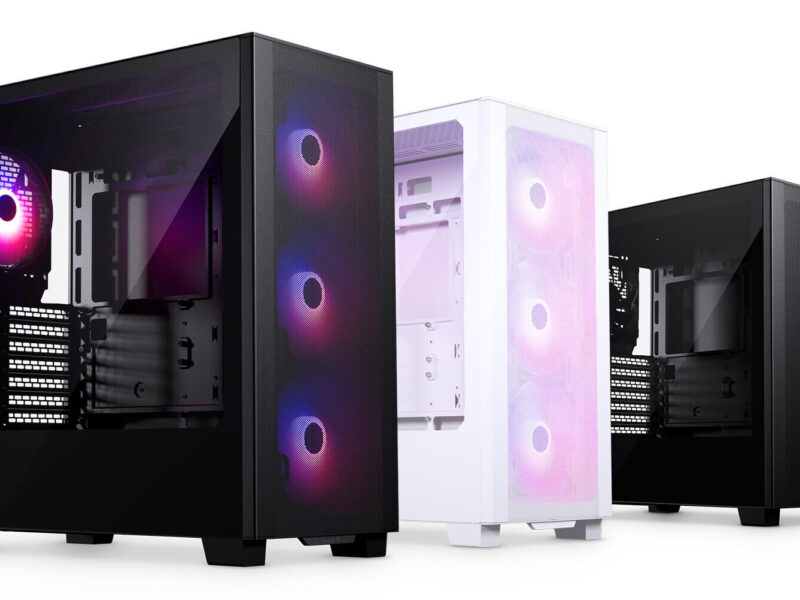Today, AMD announced its next-generation RX-7000 series Graphics Cards at a live press event in Las Vegas. Tech media’s lukewarm reception of Nvidia’s RTX 4090 and the controversies surrounding 12VHPWR and the 4080 12GB has allowed AMD to make a grand stand today, so let’s see what AMD has to offer the face of an ever so rapidly changing market.
RDNA3 Architecture
AMD set out ambitious goals for their newest architecture. They wanted to accelerate their performance-per-watt leadership and raise the bar for high framerate, high-resolution gaming and thus start the next generation of gaming. RDNA3 is the world’s first chiplet-based GPU and aims to achieve these goals. The combination of leading 5nm Graphics Compute Dies and more mature 6nm Memory Cache Dies promises a 54% performance uplift versus RDNA2. Together, the GPU is made up of 300 mm2 of 5nm and six times 37 mm2 of 6nm dies. A high bandwidth interconnects links all dies together with the Infinity cache being tuned for 2nd gen and a 64-bit memory controller, leading to a 2.7 times increase in peak bandwidth. The 7900XTX contains one GCD with 6 MCDs and the 7900XT features a slightly cut-down GCD with 5 MCDs instead. It is alleged that each MCD cluster contains 16MB of Infinity Cache, but we will learn more as AMD Investor Day approaches.



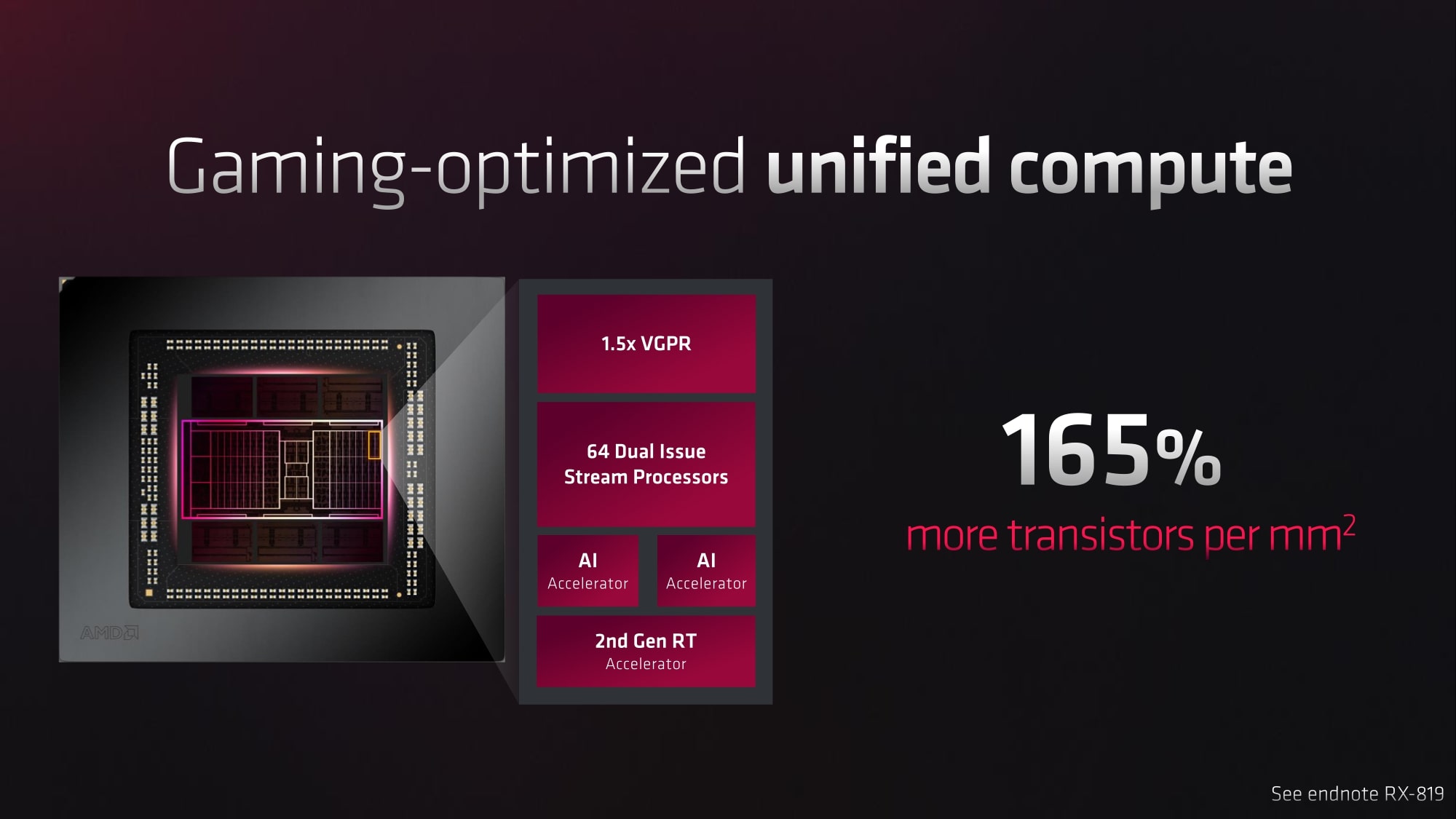


Graphics Compute Die
AMD’s newest GCD features unified, dual shader Compute Units, a new Display Engine and a new Dual Media Engine. With 165% more transistors per mm2 and 50% more capacity in its register file, for increased performance, AMD claims to push 5nm to the fullest. In practice, this means 54% more transistors than the previous gen, dual issue SIMD units and flexible Floating Point, Integer and AI operations as well as twice the instruction issue rate.
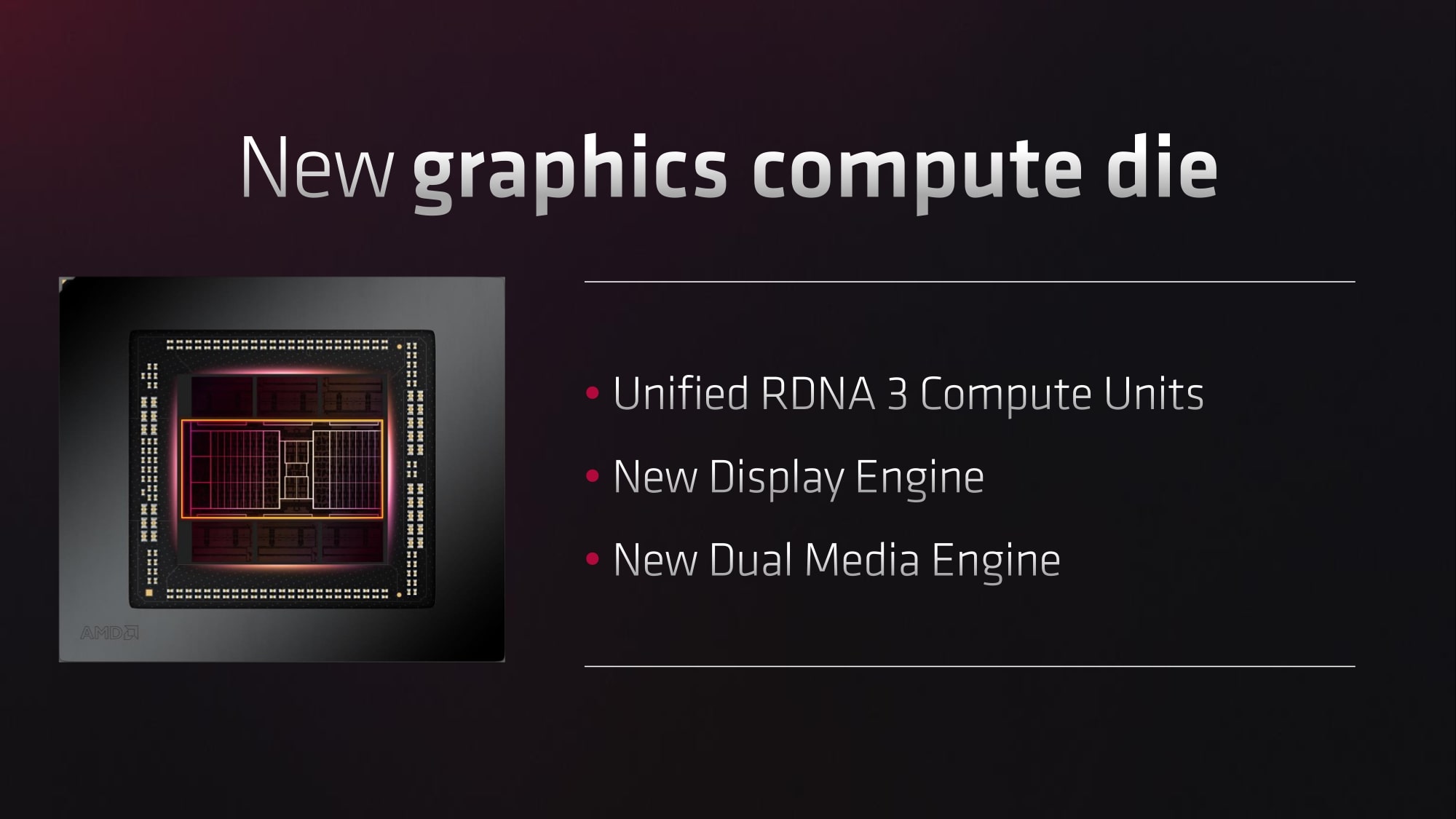
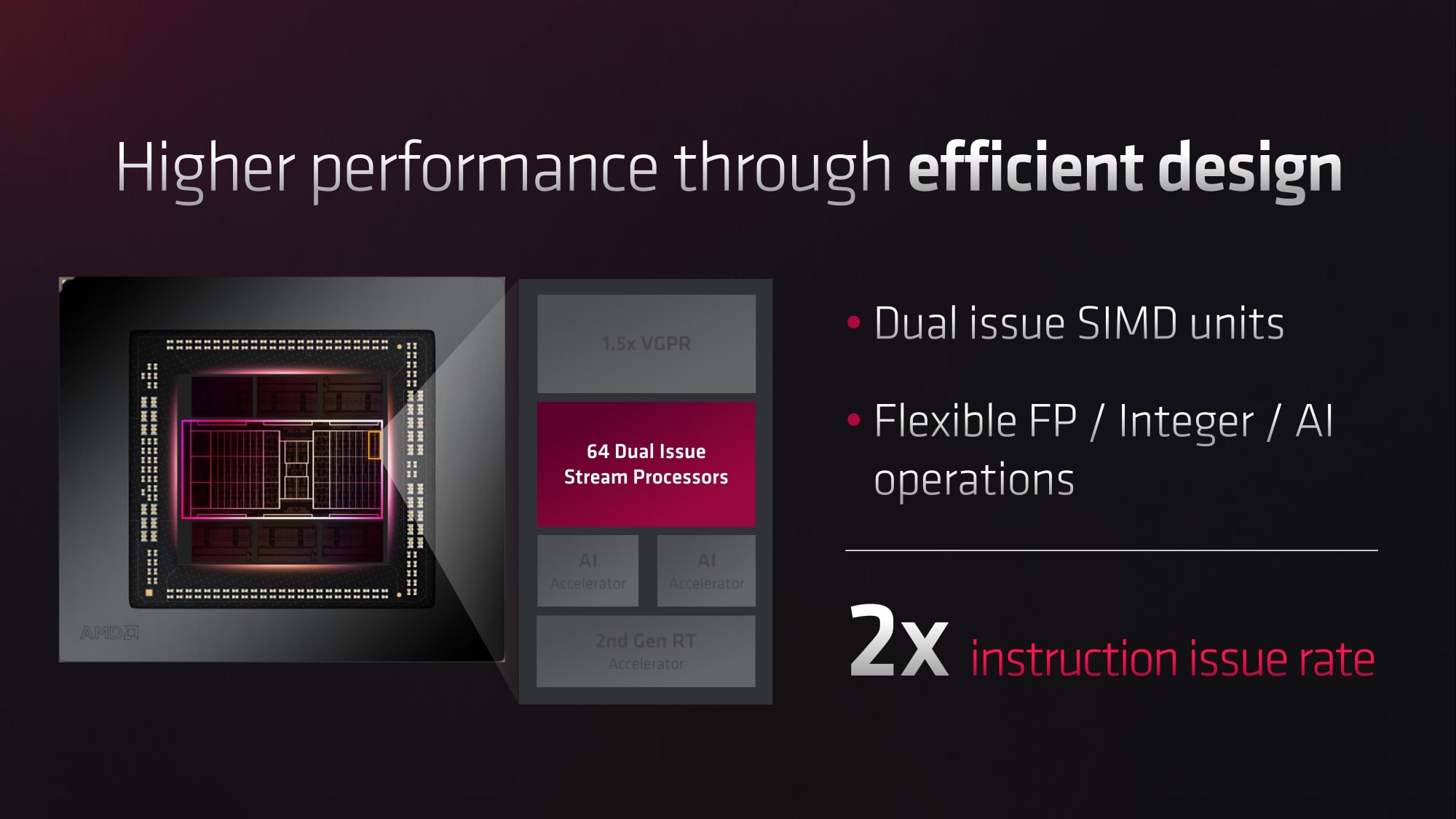
AI Accelerator
AMD has decided to include two dedicated AI accelerators per Compute unit, these support new AI instructions and improve the AI throughput, leading to a 2.7 times increase in performance.
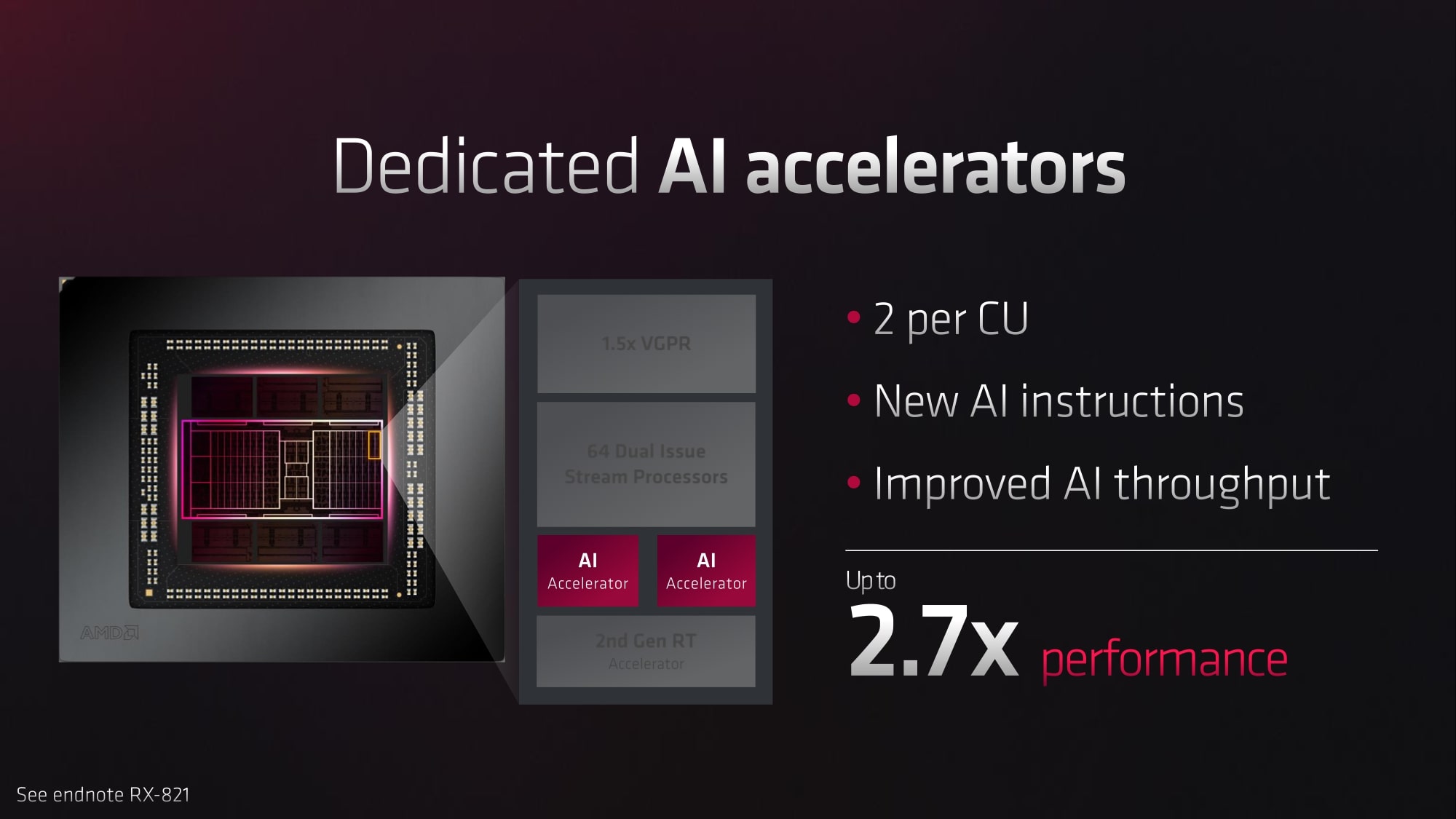
Ray Tracing
The Ray Tracing accelerators have a also recieved a generational upgrade, where new ray box sorting and traversal methods and new instructions process 1.5 times more rays in flight for a 50% increase in performance per CU.
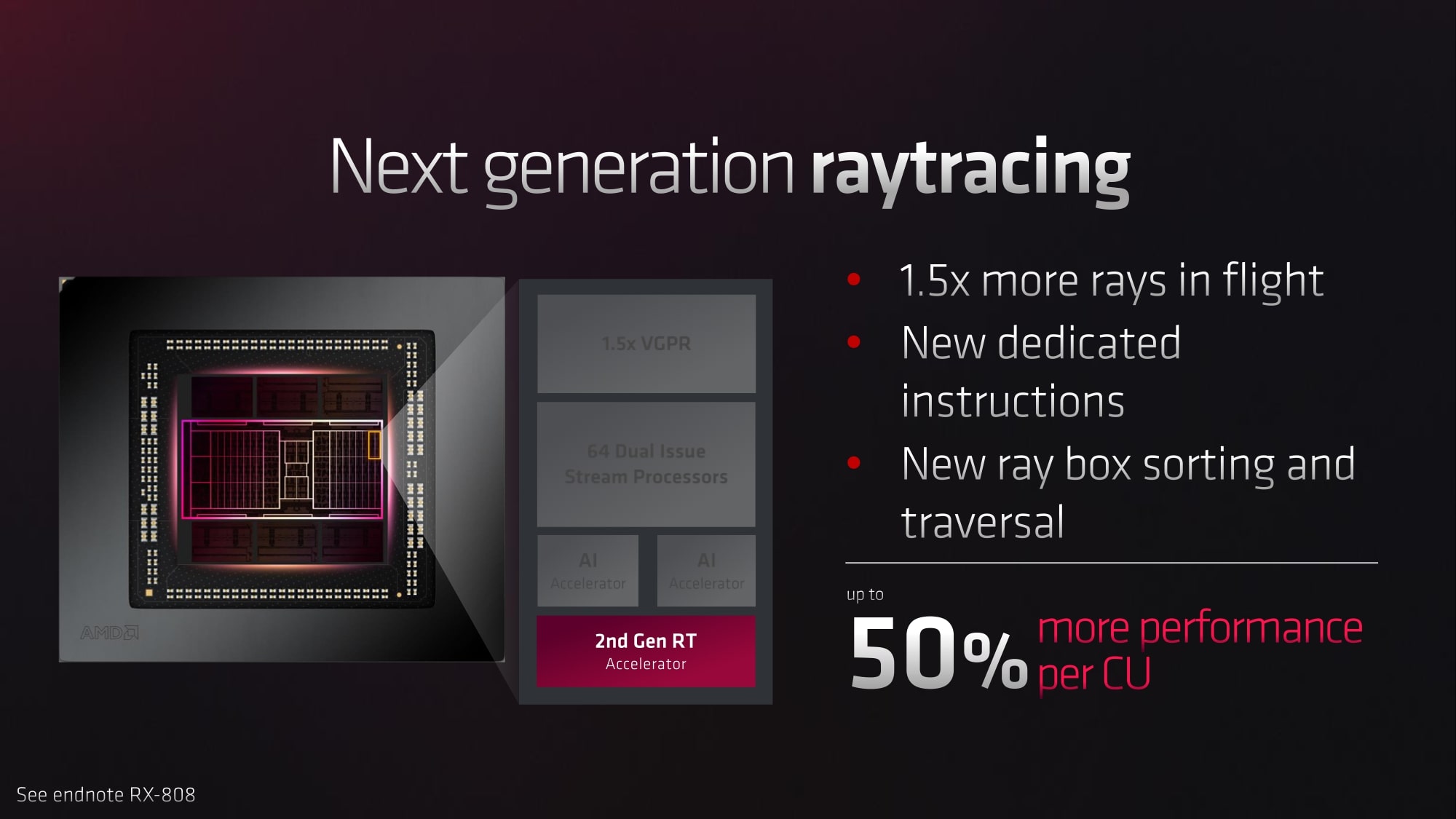
Radiance Display Engine
The RDNA3 chips are also the first consumer GPUs to include DisplayPort 2.1 with a link bandwith of up to 54Gbps. Supporting 12 bit per channel colour for up to 68 billion colours and 8K up to 165hz or 4K 480hz.

Dual Media Engine
For content creators, a new dual media engine allows simultaneous encoding and decoding for AVC and HEVC. It also supports AV1 Encode and Decode up to 8k60, where AI enhanced video encode leads to 1.8 times the engine frequency.
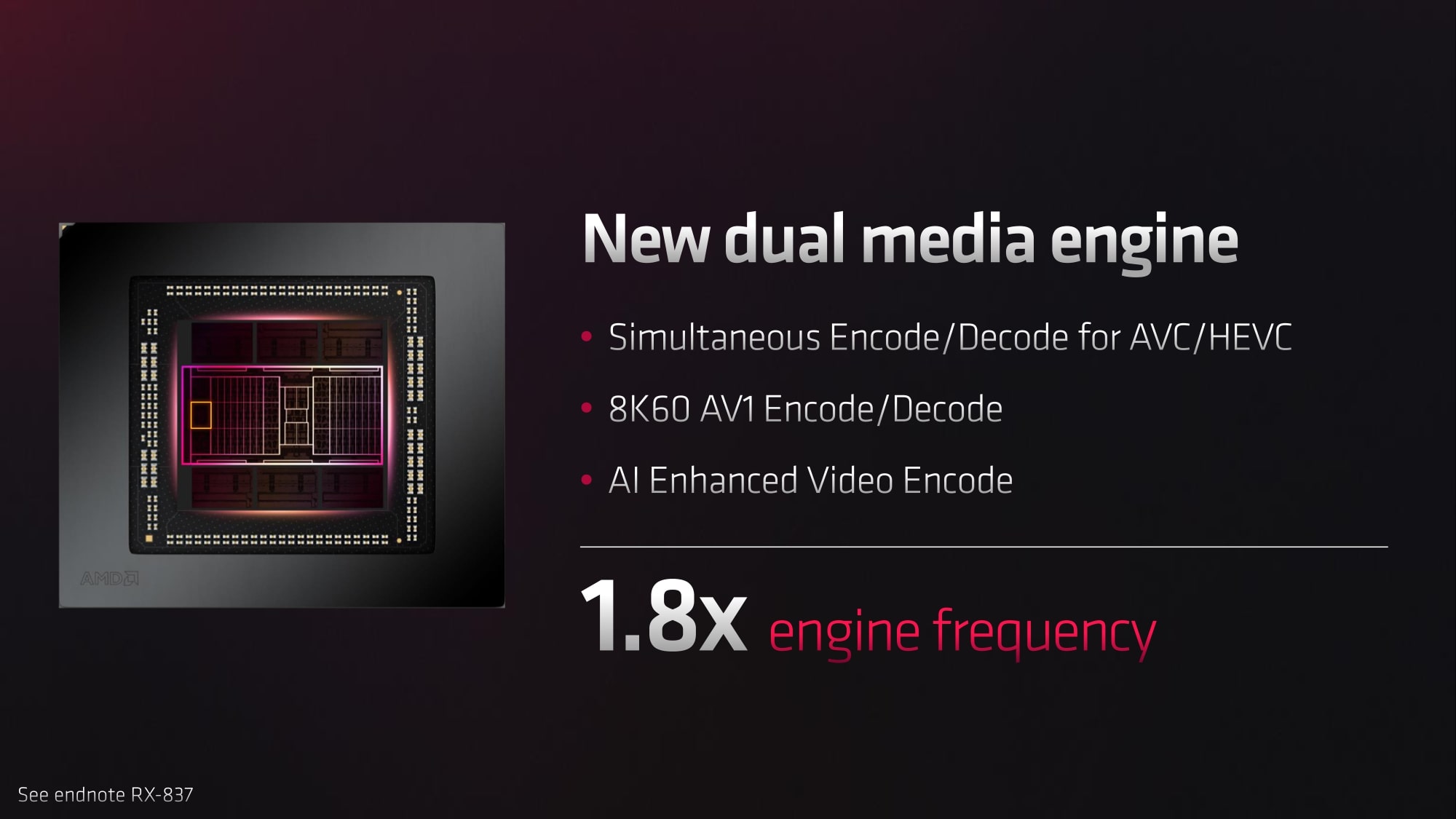
Clock speeds
AMD has decoupled shader engine frequencies for 25% power saving and a 15% frequency uplift. This allows the front end to run at 2.5Ghz while the shader runs at 2.3Ghz.
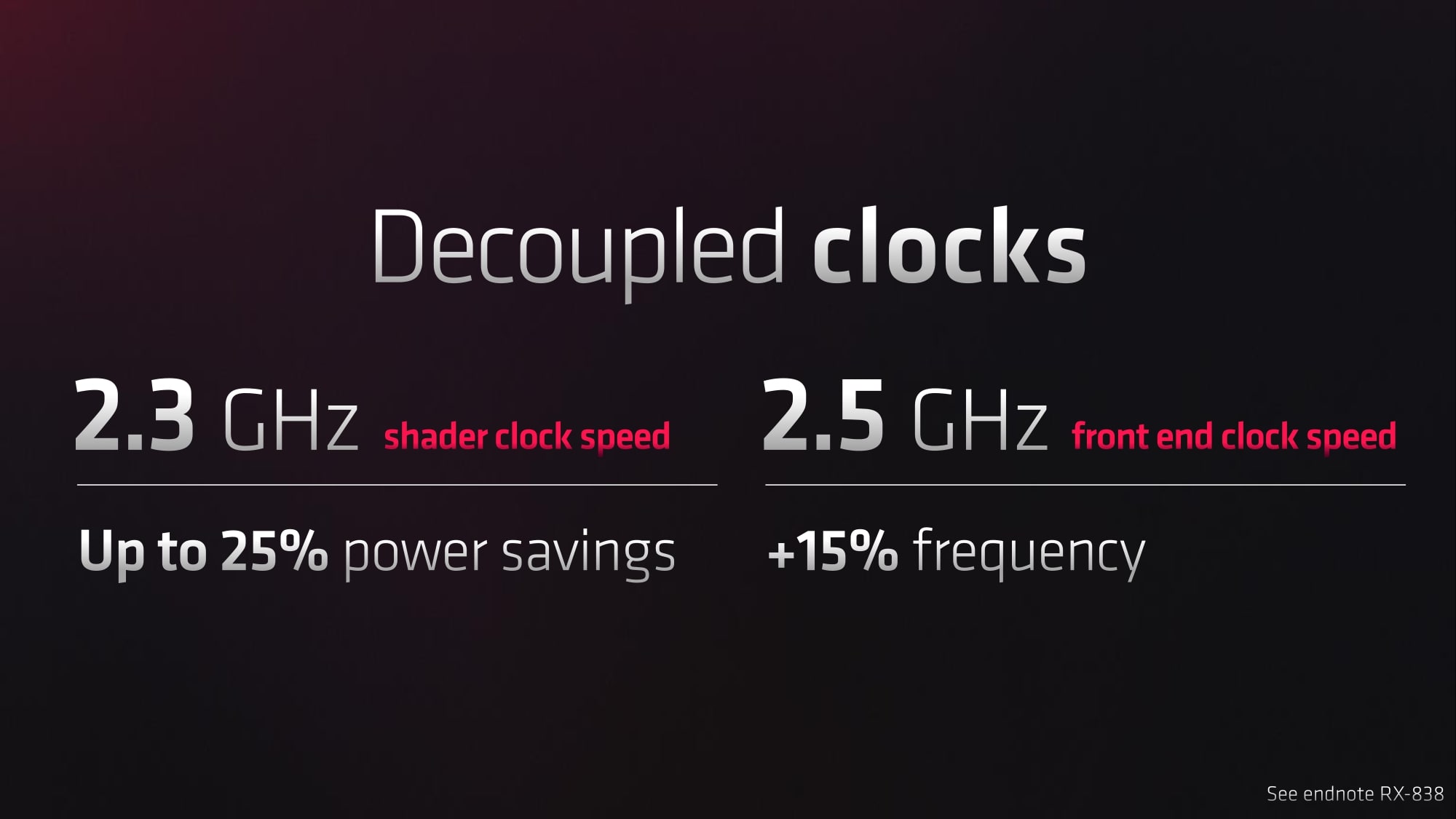
Summary
All in all, the first chiplet GPU reaches 18% higher freq and an 54% increase in performance per watt. 2.7times the peak bandwidth culminating in 61T Flops vs 23 TFlops Raw Compute on RDNA2.
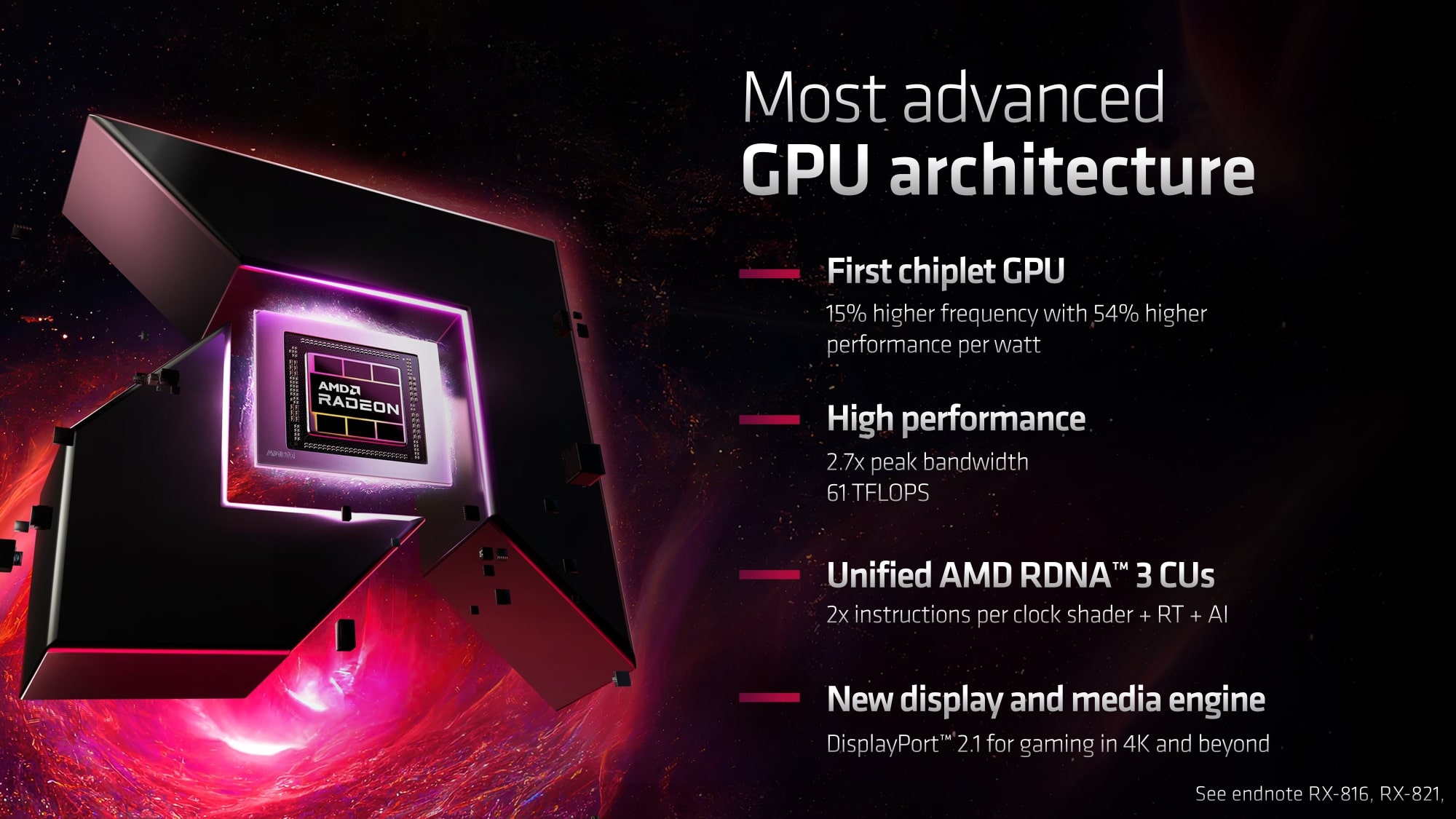
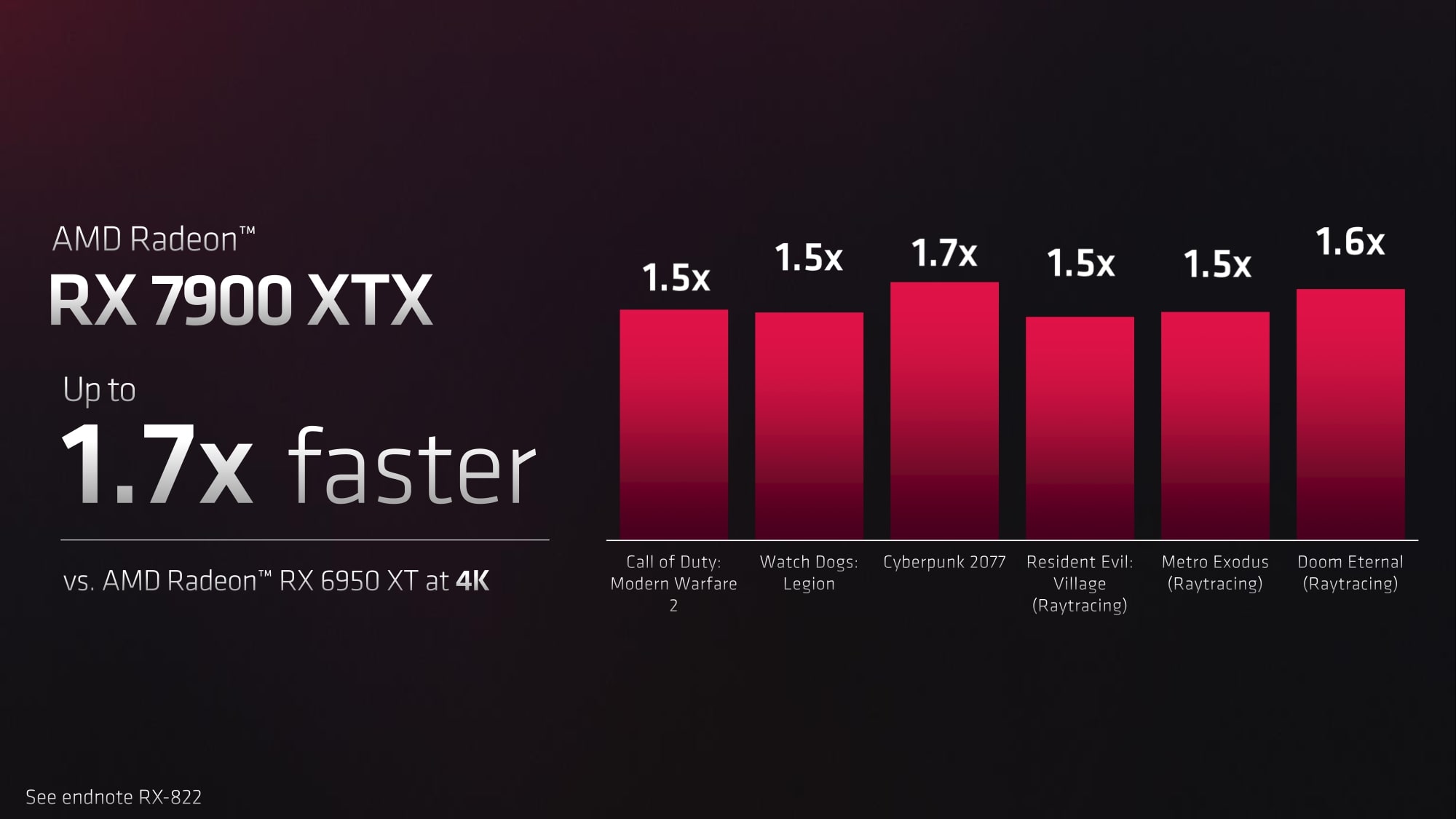
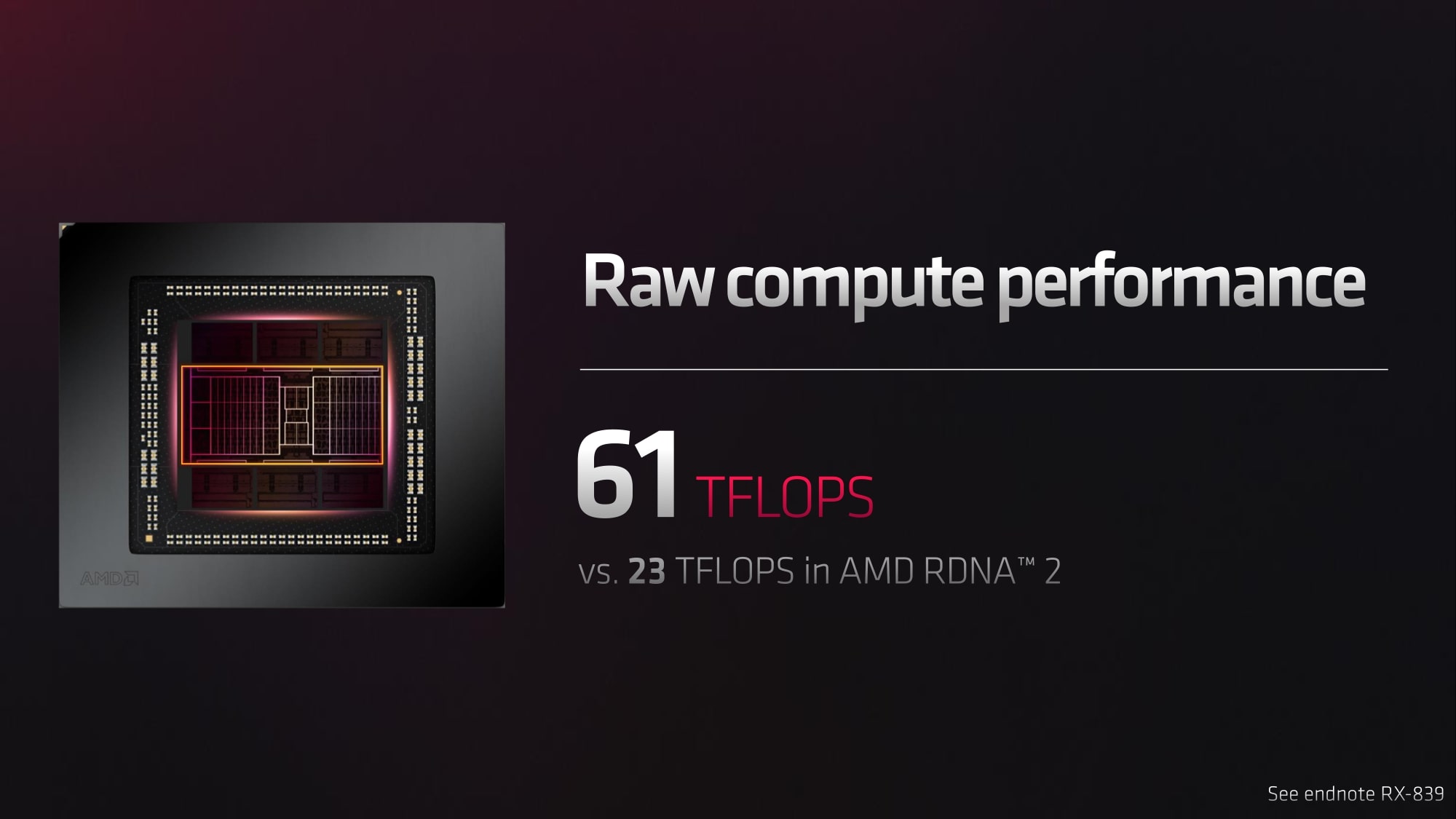
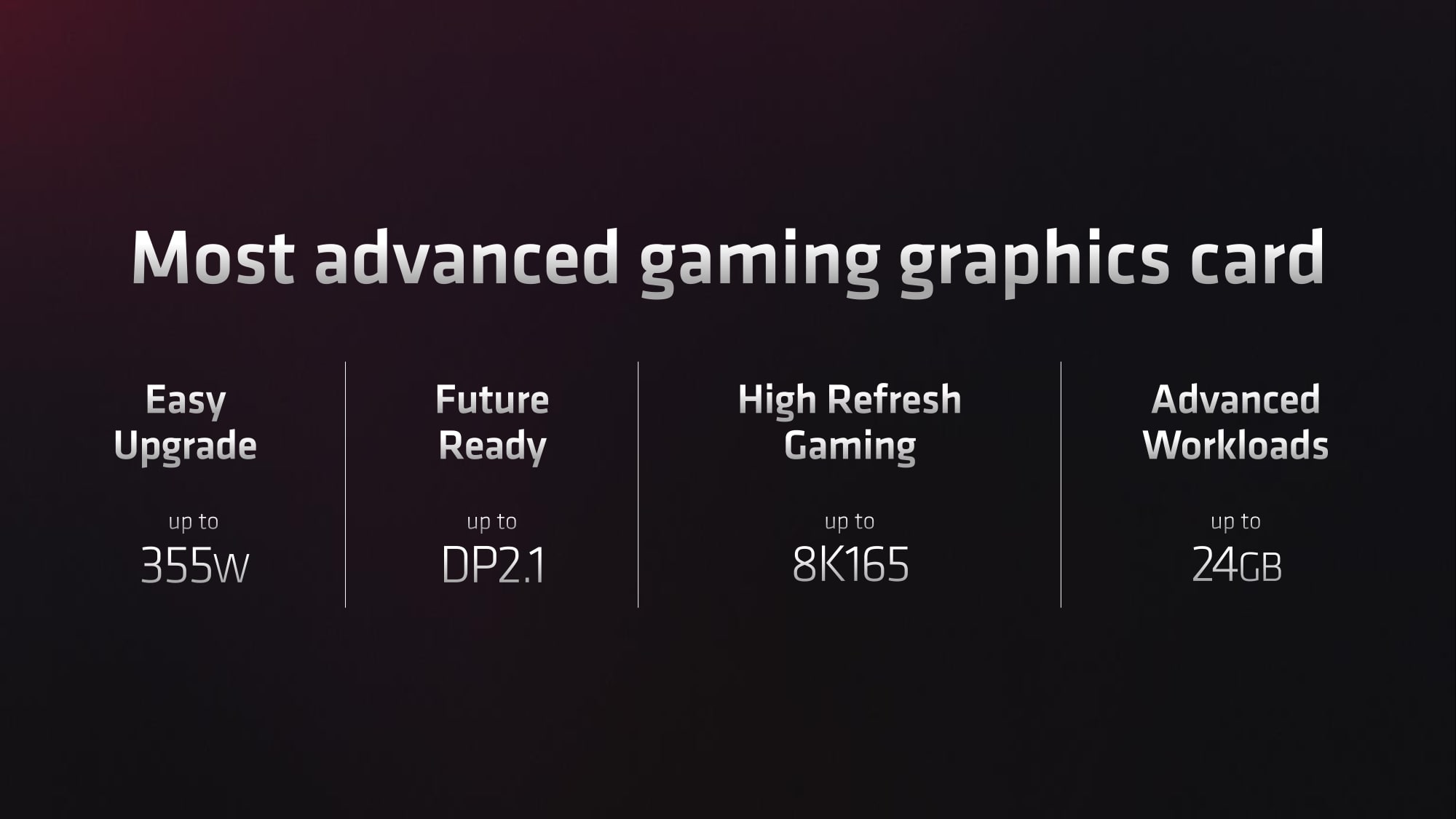
RX 7900XT and RX 7900XTX
Scott Herkelman takes to the stage to showcase the new RDNA3 7900XT and 7900XTX. So far, the details from AMD’s event have revealed to us a few things :
First off, the 7900XTX is RDNA3’s current flagship. We suspect that a 7950XT might be introduced soon perhaps sometime near CES 2023, but this is only speculation at the moment. The 7900XTX is touted by AMD to be up to 1.7x faster than the 6950XT at Native 4K gaming. With DXR enabled, it’s advertised to be up to 1.6x faster. Eventually, it will be up to independent testing to verify these claims but it will be interesting to see how the market plays out. the 7900XTX starts at a base game clock of 2.3Ghz, 96 Compute Units(CU), and 24GB of GDDR6X on a 384-bit memory bus. It features AV1 encoding and decoding, as well as DisplayPort 2.1, an interesting comparison away from Nvidia’s reasoning for avoiding DP 2.1 on their Ada Lovelace cards.
The 7900XT on the other hand is slightly cut down to 84CUs and a base game clock at 2.0Ghz. This card will also feature AV1 encoding and decoding. The 7900XTX Founders Edition has a TBP of 355W, and the 7900XT is reduced by 16%, down to 300W. Both Founders Editions according to renders by AMD contain triple fan axial designs and a dual 8-pin design.
Availability starts from December 13th 2022, with prices at USD$999 and USD$899 for the 7900XTX and 7900XT respectively.
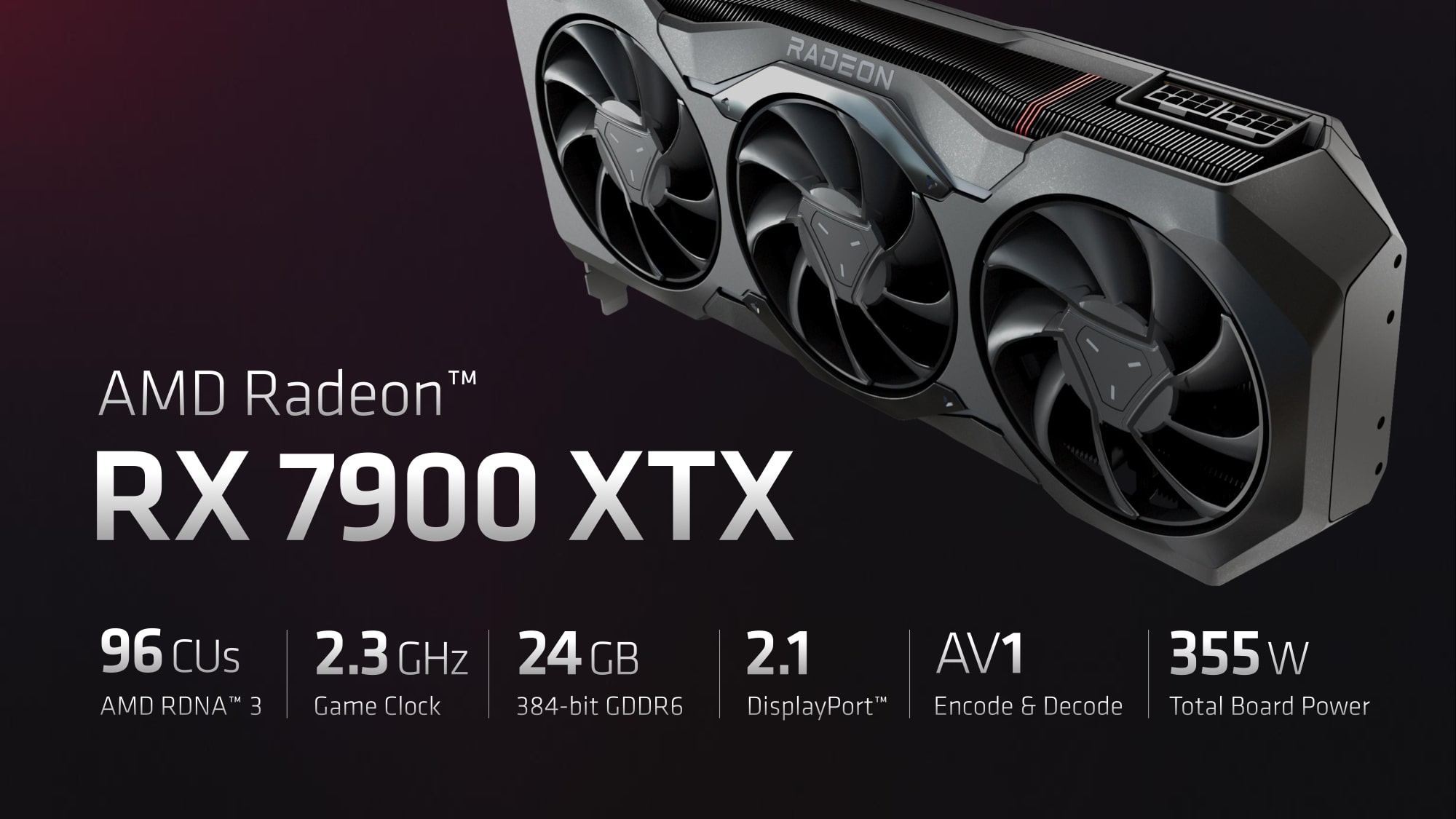


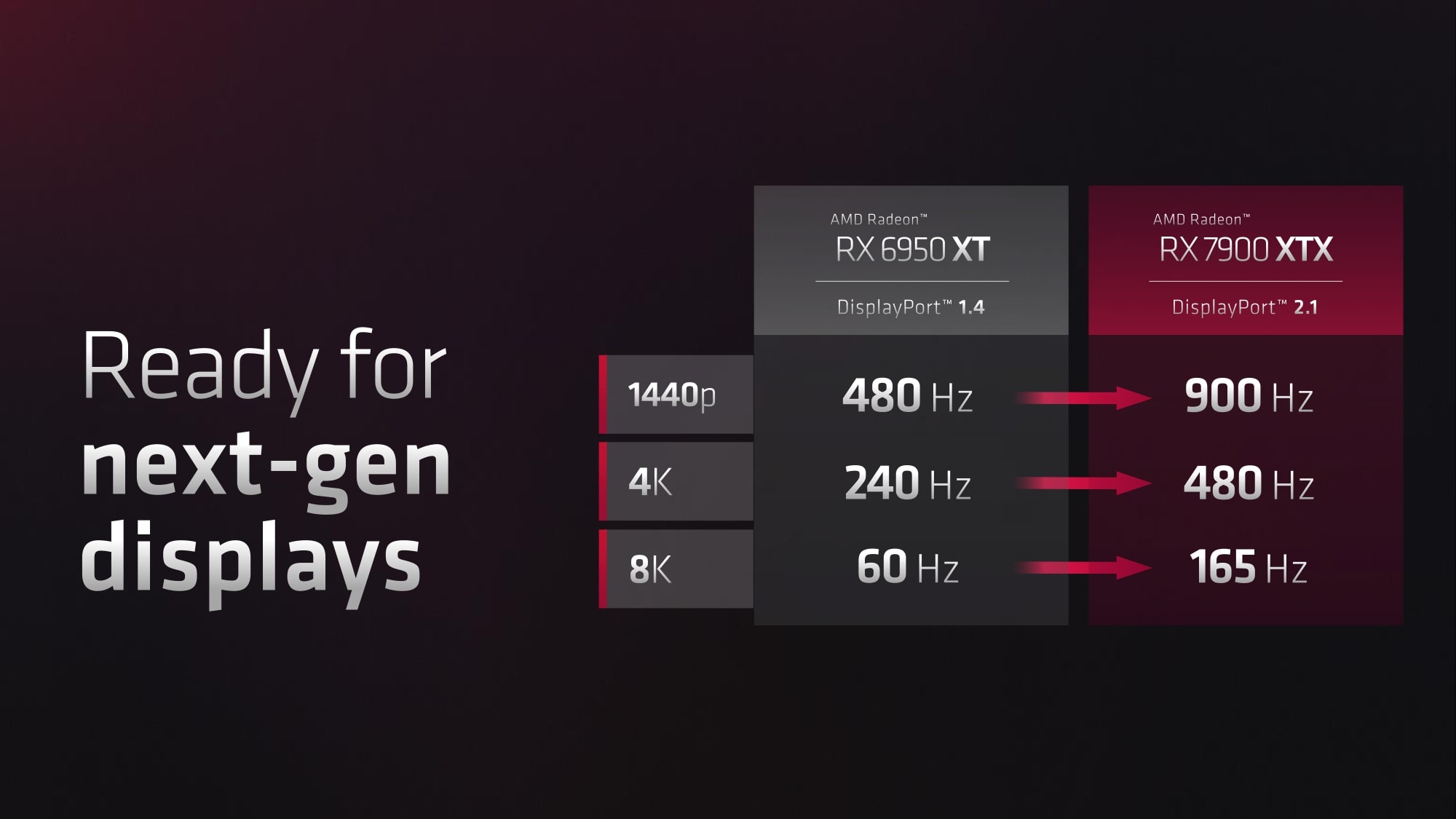
Images: AMD, Full slidedeck courtesy of Anandtech

